Guerilla Manifesto
Resurgence Youth Movement
The following texts are taken from a new volume of lost writings by Jonathan Leake and the Resurgence Youth Movement appearing this spring with Eberhardt Press. A precursor to more well-known groups like Black Mask and Up Against the Wall Motherfucker, the Resurgence Youth Movement injected an insurrectional élan into New York’s calcified anarchist and far-left scene of the 1960s. “Guerilla Manifesto” (1967) was first published in issue 6 of Resurgence, the journal associated with the RYM. We have also included two excerpts from articles that introduce the new collection, penned by Sean Lovitt and editor Abigail Susik, who assembled the present volume after tracking down the formerly-unknown Leake family archives.
Teenage Anarchists (Sean Lovitt)
Jonathan Leake was a teenage anarchist. He was just 17 years old when, in 1963, he moved to New York City’s Lower East Side and joined the Industrial Workers of the World (IWW). For half a century, the IWW had been one of the central hubs for anarchist organizers and a massive force in the workers’ movement. By the time Leake joined, members (known as Wobblies) had dwindled to a small group. In 1961, there were as little as 115 dues-paying members across the country.1
Leake was part of a younger generation that helped revive the New York chapter of the IWW and, along with it, an anarchist movement. The publication that Leake co-founded, Resurgence, and its corresponding activist group, the Resurgence Youth Movement, were at the center of a growing anarchist scene in New York and a broader network across the country. These 1960s anarchists were not primarily concerned with breathing life back into aging political organizations like the IWW. They were inspired by a new spirit of youth rebellion found in rock ’n’ roll, the drug culture, Black liberation movements, and riots. Resurgence articulated an anarchist vision drawn from youth uprisings and, in doing so, altered the course of the anarchist movement.
Leake and his comrades’ affinity for youth uprisings led them to rediscover an insurrectionary thread in the anarchist movement. A manifesto included in the first issue of Resurgence lays out their anarchist principles, including a rejection of the political system and opposition to the State, which they contrast to the “direct spontaneous action of autonomous groups.” Under the heading “Organization + Agitation + Insurrection,” they call for these autonomous groups to form voluntary associations that undermine the State, placing particular emphasis on street fighting youth.2 This text anticipates the concept of affinity groups several years before Leake’s comrades in Up Against the Wall Motherfucker popularized the term. Not only that, the authors describe self-organized affinity groups as the basis for spontaneous and decentralized conflict. In the language of today’s political landscape, Resurgence Youth Movement outlined an insurrectionary anarchist tendency.
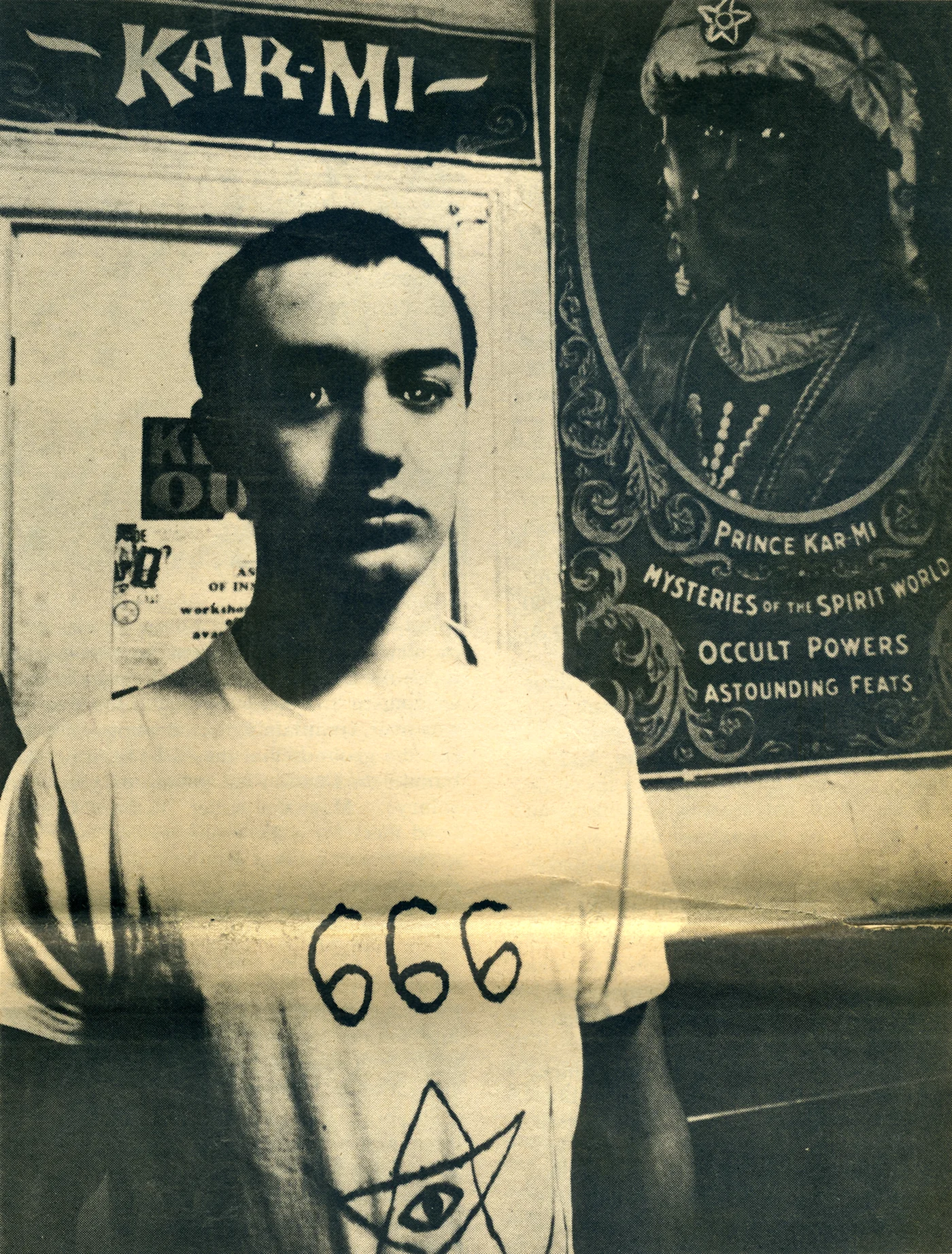
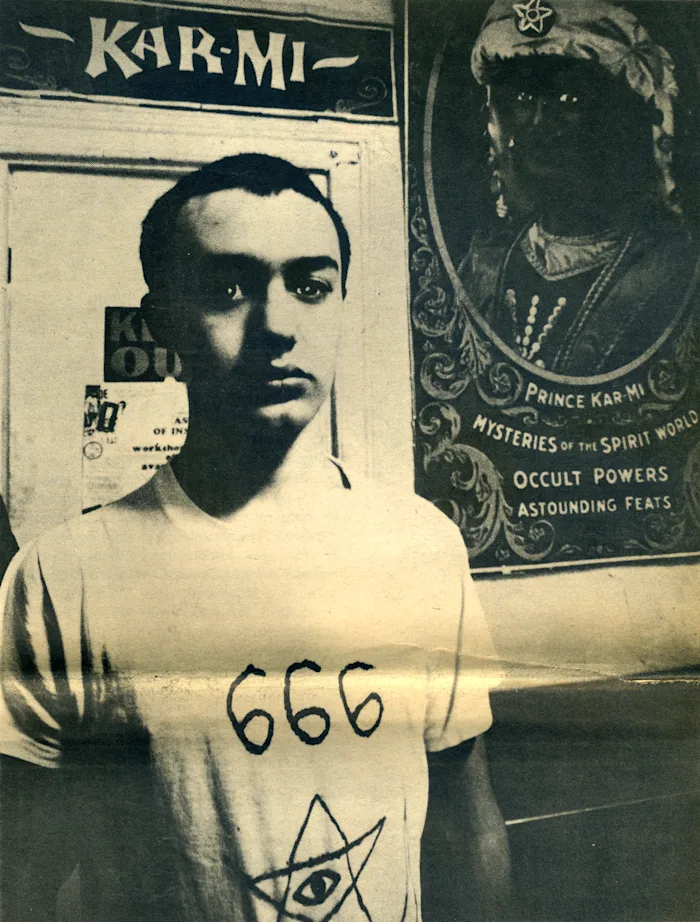
Historically, anarchists had been intimately associated with insurrection. One need only recall anarchist involvement in the mass uprisings of 19th century Europe, the infamous “mad bombers” of the fin de siècle with their belief in the “propaganda of the deed,” or, in the American context, the Galleanists, best known from the 1920s trial of Nicola Sacco and Bartolomeo Vanzetti. “After they were defeated,” anarchist historian Andrew Cornell points out, “U.S. anarchists sidelined insurrectionism.”3 In the years following World War II, the anarchist movement in the United States dwindled. The ideas of anarchists, if not the practices, found sanctuary in the art world and among pacifists.
In the decades before the formation of Resurgence Youth Movement, the anarchist movement in America had retreated from the center of conflict. Where glimmers of the “beautiful idea” persisted, anarchism evolved to meet a less violently confrontational period. Anarchist influence can be detected in the Beat Generation and the Civil Rights Movement, which Cornell names an “anarchist-pacifist-avant-garde coalition.”4 Beyond the artist and pacifist scenes of the postwar period, young people like Leake could still encounter an older generation of anarchists in their stomping grounds, such as Union Square Park. Leake became familiar with these members of the Greatest Generation, close to fifty years his senior, during his preteen years. While his experiences with these survivors of the red scare and McCarthyism were formative, they also drew his attention to an absence. As Leake puts it: “I sensed that a whole generation was missing here; it was as though they were my grandparents.” His would-be “parents” in this scenario, pacifists and artists, do not even register as a generation of anarchists. Yet, like the pacifists and artists before them, Resurgence Youth Movement members were free to adapt anarchist ideas to their experiences and concerns. Leake could not have known at the time that he and the younger generation would rekindle the anarchist movement in America. […]
Publication of the Resurgence Youth Movement (Abigail Susik)
The first page of Resurgence 1, constructed with “labor donated by the lumpenproletariat,” announced:
The Resurgence Youth movement does not advocate the overthrow of the State by violent or any other means. The Resurgence Youth movement does not advocate the support of the State by violent or any other means. The Resurgence Youth movement ACTS.5
How did surrealism, born during the 1920s, bolster this program of youth revolt? An apocalyptic poem by William Butler Yeats entitled “The Second Coming” (1920) filled page one of this first issue, only to be followed by an unauthorized anonymous translation of excerpts from Pierre Mabille’s undated essay “Le Surréalisme, un nouveau climat sensible,” reprinted from Front noir 1 (June 1963). This excerpt from a larger unedited text by Mabille entitled "Conjonction" was first published posthumously in 1957 in a French journal and then reappeared in the initial issue of Front noir following an open letter to the surrealists signed by Janover and his associates. Like the open letter, which acknowledged the importance of surrealism’s example as well as its grievous failures, the preface to Mabille’s essay that appeared in Front noir was torn in the nature of its attraction to surrealism. Mabille’s ambitious hopes for surrealism had, in the Front noir editors’ eyes, transformed into an awareness of surrealism’s shortcomings in the present.
The publishers of Resurgence had no such misgivings about surrealism. The Resurgence translation of Mabille’s essay as “Surrealism: A New Outlook” served as a decisive opening salvo about how the surrealist “teenrevolt” in Paris in 1924 inspired the one in New York in 1964. Mabille’s essay portrayed Europe as in flames, in the process of revolutionary rebirth, a vision that would recur in both word and image throughout the twelve issues of Resurgence in phrases such as “SUBMERGE EUROPE!” According to Mabille, as translated in these first pages of Resurgence:
If Europe wishes simply to survive, it will continue to belittle surrealism. If Europe wishes to undergo a fiery death and thereby experience a renaissance in the literal sense of that word, it will embrace surrealism, for only in this way can it utilize the permanent values of the past, those that will serve as the future basis of a new civilization.6
Notably, Mabille’s essay proved important for the surrealist subculture of the 1960s. When Franklin and Penelope Rosemont guest co-edited the first issue of volume four of Radical America (January 1970) — a Marxist and SDS-affiliated journal founded by Paul Buhle in 1967 — they retranslated and reprinted the Resurgence excerpt of the Mabille essay as “Surrealism: A New Sensibility.” The Rosemonts titled their special issue of Radical America “Surrealism in the Service of the Revolution,” emphasizing their investment in a surrealism that was directly engaged in instigating sociopolitical revolt via homage to the title of the surrealist journal Le Surréalisme au service de la révolution (1930-33) (although in the case of Chicago surrealism, this was not exclusively linked to a Marxist political revolution). Yet, this assertion of the “second coming” and “new climate” of a revolutionary-surrealist sensibility in Resurgence 1 and volume four of Radical America (1970) was more than just the emulation of a historical example or an affirmation of surrealism’s continued efficacy, contra Front noir. Leake and Caughey, like the Rosemonts after them, invoked a catalytic type of revolutionary historical practice via Mabille’s configuration of the forces of social change as a phoenix that utilizes “the permanent values of the past” as the “future basis of a new civilization.” The surrealism of Resurgence was launched as a direct-action praxis for revolution.
The rest of Resurgence 1, arguably the publication’s most surrealist issue, made this activation of surrealism even more explicit. The essay “Reflections on Invisibility” by Caughey discussed the ongoing “incompleteness of the visible world” and the way in which surrealism merges mysticism, science, and anarchism in its study of the nature of freedom and revolt and in its collective realization that “freedom has always been the enigma.”7 A reprinted letter of disaffiliation from the newly formed RYM to the New York chapter of the Social Democratic Federation stated, “to us is given the joyful burden of the surrealist dialectic in whose name we do hereby proffer our energies, and expectations for the new age when faction in-fighting shall be no more and the fruits of the revolution will be ours.”8 Following an essay on the Harlem riots of July 1964, a RYM manifesto dated August 10, 1964, pronounced, “We declare solidarity and affiliation with surrealism and dedicate ourselves to the task of defending hallucinative [sic] forces now trod underfoot by science and established religion alike. In a spirit of integral pessimism, we declare war on all rationalist dogmas that stand in the way of the unconscious, the spontaneous, the liberating.”9 This allegiance with surrealism operated in tandem with the group’s fundamental cause of a youth-led rebellion: protection of civil liberties for students and minors, opposition to military conscription, support of African American youth defense councils against the white power structure, and coordination of the youth struggle with that of the working class.
This vehement anti-racist program and affiliation with surrealism remained consistent throughout the remaining eleven issues of Resurgence. Issue two (May 1965) clarified that the RYM was interested in an anarchist “antipolitics” that pushed beyond the traditional interests of the left, perhaps as influenced in part by their contact in New York at this time with Murray Bookchin, the prominent anarchist thinker and organizer. Their definition of “antipolitics” emphasized their goal of establishing “human relationships beyond the institutions of power, coercion, and organized violence.”10 This attraction included a combination of juvenile delinquency, poetry, surrealism, and psychedelia alongside the consumption of LSD and marijuana and participation in “teenrevolt” rock and roll riots. More specifically, the RYM initiated “dialogue” with the “Marxist-surrealist” Front noir and Alexander Trocchi’s situationist-inspired Project Sigma, based in the United Kingdom.11 The editors of Resurgence stated:
Besides identifying ourselves with a general revolt of the young, which we feel has projected itself beyond the categories established for the “angry young men,” the juvenile delinquents, “troubled adolescents,” and other cliches of the thirties, forties, and even fifties, we also allied ourselves [with] movements which “left-wing” radicalism has been little associated with, or has had little desire to associate itself with, save in the most trivial sense. These include the surrealist and the psychedelic movements.12
In July 1965 Resurgence 3 expanded its discourse on anti-capitalist “teenrevolt” with articles on the Berkeley Free Speech Movement, opposition to the Vietnam War, and Third World liberation. Leake’s many organizing activities in 1965 with the IWW and the anti-Vietnam War May 2nd Movement reflected these concerns voiced in Resurgence.13 An important essay by Leake, “History as Hallucination,” referenced Frantz Fanon and expressed solidarity with minorities in the United States and abroad.14 Issue four aligned revolt with the occult, printing a magical curse against the police and citing Satanism as a valuable tactic in the activist’s repertoire, while issue five included Antonin Artaud and H. P. Lovecraft on the masthead’s list of editorial board members. Issue nine from 1966 offered a memorial tribute to André Breton and a translation of one of his poems. The final issue, number twelve, reprinted the founding RYM manifesto from Resurgence 1, dated August 10, 1964, declaring solidarity with surrealism.
Often decorated with stencil illustrations by Leake or Caughey, the twelve issues of Resurgence invested space in a wide array of topics, such as the British Invasion and psychedelic rock, sexual liberation, anti-capitalist and occult-based art production, nomadic wandering, and anti-work sabotage.15 The avant-garde movement dada appeared occasionally, invoked in name only. Advocacy of causes such as the anti-war movement, Black Power, the Native American rights struggle, and the indigenous guerilla groups in Mexico that preceded the Zapatista Army of National Liberation was ever present. Diverse contributors, including activists and street gang members, continually declared their desire for affinity with an autonomous network of anti-nationalist international youth groups.16 Later issues of the zine were preoccupied with the Dutch Provo movement.
Increasingly apocalyptic in tone, the final issues of Resurgence condemned nearly every aspect of modern life in the United States, especially that of the supposed anti-establishment tendencies of the mass counterculture. The death of “Euroamerican” culture was predicted, even though the editors warned that “THE NAZIFICATION OF AMERICA THREATENS EVERYONE.”17 A new type of art production was envisioned in Resurgence 11: one that resisted denotative realism in its drive for social transformation, was entirely free of monetary association, was anonymous and uncensored, and that harnessed occult powers in the service of manifesting societal change. Likewise, the first page of the last issue, number twelve, produced in San Francisco in the spring of 1967, railed against the hippie trend:
That which we love does not yet exist, and we have nothing but hatred for your ethics, your lies to yourself and the world ... While the “hip” bourgeoisie chants Hare Krishna, Imperialism napalms kids in Vietnam and shoots black teenagers in the back for “suspicious behavior” ... What good is “freedom” for a hippy elite ... when the food we eat, the clothes we wear, the very land we stand on, has been looted by Imperialism.18
Years later in his memoir, Leake would write:
“Woodstock Nation,” the Yippies, and their revolution for the hell of it was, at best, a counterculture fantasy, and at worse, a sinister ploy to media-manipulate young people away from serious struggle. Oppressed peoples, in this country and around the world could not afford to do things for the hell of it — they were raising hell because they were living in hell.19
Reflecting on Resurgence in 2005, Franklin Rosemont called Leake and Caughey “militant supporters of surrealism” and added, “Despite our many differences, no U.S. magazine was closer to The Rebel Worker than this irrepressibly strident voice of the ‘world revolution of youth.’”20 [...]
Guerilla Manifesto
The outstanding example of anarchist revolution is emerging in the wars of liberation waged by the dispossessed. The tactic of these wars of liberation is the organization of guerilla forces of voluntary militia in city and country areas, and spontaneously arming, insurrecting, and sabotaging the functions of control in society. Such guerilla warfare is based on the participation of the people and the guerilla is the military expression of the people's struggle, whether waged by organizations or spontaneously breaking out of urgent needs and hopes. Both in structure and purpose these movements of "national liberation" accurately express the forces and sentiments of anarchist revolution. The revolution that is due to erupt in the Western countries themselves, the Home Camp of Imperialism (the United States and Europe) will reveal the basic weaknesses and implicit alternatives in the bureaucratic and authoritarian civilization. The struggle of a few will become the struggle of many, suddenly, in apocalyptic revelations of a new world, of the new spirit of freedom, of fire. Thus, the reorganization and reconstruction of society will primarily be as primitive and barbarian times of great poetry of heroic violence and the forces that will emerge to build a new world all over the world will be the new brotherhoods of rebellion that have resurrected the guerilla and anarchist spirit. The entire meaning and function of urban guerilla warfare in relation to the USA and Europe is yet to be revealed in the actual Revolution that will sweep the Earth very soon.
Many anarchists today repudiate the guerilla movements.They give allegiance to the bourgeois doctrines of non-violence, politics, religion, and remain alienated from the totality of the changes around them. History will repudiate these individuals and organizations which fell by the wayside as did many socialist and communist groups. The real revolution will make immediately obvious who are the real revolutionaries, the guerillas. Who is the Underground in America, in Europe, all over the world? It will show itself soon.
Anarchists in particular have a duty to the revolution that is unfolding, for anarchism has been the apprehension of this revolution, and closer to it than the other radical movements of socialism or communism. The anarchist principle of decentralization traced an ethic of mutual aid based on voluntary groups that exists today on the fringes of society, in the underground.
Anarchism is faced with two basic tasks in relation to the development of the Revolutionary Idea. The first is the resurrection of the Apocalyptic vision. The second is the restatement of the anarchist principles of autonomy, particularly in regards to the organization and tactics of a revolutionary movement. The first tack is concerned with taking into account a number of new trends in revolutionary thinking. These include the psychedelic movement, and the affirmation of a new culture, a new civilization within the shell of the old. The resolution of the conflict between the European Idea and the Afrasian American New World, which is now being enacted in North America, brings to the fore this essential element of radical thought and action. The political and bureaucratic developments of social democracy, state socialism, reformism, etc. all proposed to replace the ethics of crisis, of the Armageddon between People and State, with a new ethics of social unity and social peace. The political radicals tied a great portion of the direction of the idea to a professional class, which although transformed by its new place in technology, industry, soon re-acquired its parasitic stance, and made the full about face, becoming integrated with the power structure. Indeed we may look at almost all contemporary socialism as an attempt to heal the wounds, to make up for the historic distrust of the lower echelons of the working class, of the lumpenproletariat agricultural workers, the unemployed, for the "intellectuals." The messianic vision of a total revolution that would transform every social relationship, would erase the concept of "worker" as it would the concept of "capitalist," was carried by a minority in the radical movement, anarchists, syndicalists, and the recurring heretics of the spirit who ambushed European culture in the 1920's and 30's in Surrealism, and which now make themselves felt through a chemical substance. These elements are like the tip of an iceberg projecting out of the murky waters of this stagnant society. In the vision of the surrealist, anarchist, and psychedelic revolutionary is seen all the ingredients of a new context for work, for leisure, for life itself. The street rabble in the cities of North America, the blacks, the Puerto Ricans, the dropouts, all mirror the colors and echo the sounds that are of Africa, Asia, and the New America, not of Europe. This final cleavage between cultures has been part of a pattern of cleavage between economic groups, generations, ways of life. Social Democracy and all the forms it took have been swallowed by the monster they created, the bureaucratic state. Now the words socialism, communism, revolution once more designate the outlaw, the dissident, the submerged, that which is to be.
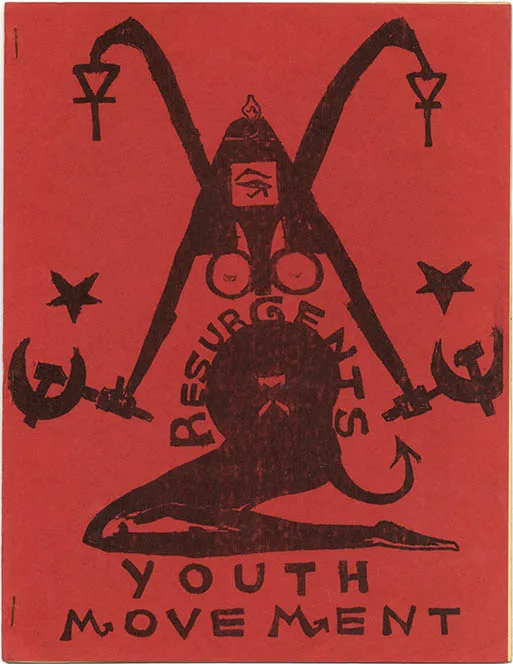
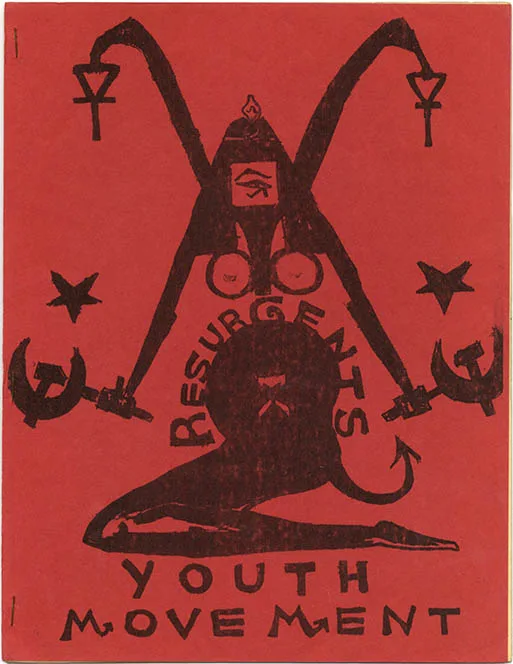
We must not be too presumptive in outlining these groups. We can trace a pattern, apocalyptic, Sorelian, almost mystical in the emerging radical outlook, but it will continue to change to accept yet newer elements, to lay the framework for a genuine and world Human Philosophy. We can see that the bulk of the Christian Ethic will be absorbed by this process, reformulating the Christian myths in general terms, the resurrection of Christ in a billion persons, the original (including Judas, before the betrayal, the crucifixion, the dividing up of the Christ spirit amongst Peter, Paul, etc.) The Apocalyptic message of St. John the Divine and the role of prophecy in the growth of an idea will also be explored anew, in view of the changes of the psychedelic revolution particularly.
The Revolution is a Permanent Revolution and a Continuous Revolution. Each new stage reveals the essence of the stage to come, and the Idea, the Apocalyptic Vision, and the anarchist free principle running through the entire fabric as threads of red and black. It is rightful that this task has been left to the anarchists, who never as a movement of individuals expressed desire for political control, even in situations where such would have been tactically useful. Like the early Christians, the anarchist movement today carries the banner of many martyrdoms, of hopeless, heroic and doomed revolutions, of men and women who died for a principle they knew they would never see fulfilled. In this Age, we enter the battle anew, confident in the strength of our principles and their fulfillment in our own times. Anarchists look over the history of their movement with amazement, seeing in the seeming confusion of violence and nonviolence, of individual and group, in all the shades of libertarian thought a rainbow of many colors derived from a single light.
The anarchists, placing the bulk of their Idea in the hope of man’s expanding consciousness, which, in the process of demytholization (which has been described as the process of man acting out and creating his myths) freed the mind from the restrictions of time, advance a new complete mythology of humanity. Their Idea carries the sum of human sentiments, the Love and Hate, the Life and Death born in the womb of the world in eternal and infinite revolution.
The anarchists seek and reveal the essence of the human mind. The recent discoveries and investigations into the “rational sciences” of mathematics, the implications of logic and prelogic and antilogic all affirm ancient and heretic anarchist principles of freedom, total freedom. We cannot expect to be recognized and revealed so soon. The radical socialists and communists will continue to carry on a dialogue with 19th century anarchism alone, not recognizing immediately the basic anarchism in their own outlooks, or the anarchist movement everywhere around them. Even some anarchists will claim an exclusive meaning for the philosophy. However, all [that is] exclusive, divisive, and "functional" [is] soon to disappear from human society completely. Man no longer has need of a thousand separate instruments to understand or transform the world around him. The Revolution is building a society whose definition will be all of these investigations and more that we have yet to open on this planet and beyond.
A restatement of revolutionary theory is a restatement of anarchist theory. The ideologies of socialism and communism are unable to face the development of a totally free revolution. The revolution that we propose is a mind revolution, a body revolution, a soul revolution. It is the Carnival of the People, dancing in the streets to the music of freedom. We embrace rock n' roll, which are the hymns of this new revolution. This music points out the Internationalist Idea in this revolution. Rock n' roll is a world youth culture, evolved from the soul struggle of Africa in America, especially Young Africa.
We must face the developments of new science and new heretical investigations into the Identity of Man which is still an indefinable concept in every field of knowledge. The entire framework of life, the design of things, the diet, disappearance of the family, private property, and logically, the state, through a colossal and sudden self-realization and revelation, these are the changes discussed and advanced in a million science fiction paperbacks. The pioneers of science fiction, Jules Verne and H.G. Wells, made startling prophecies regarding machines, society, and man's elusive identity. Why then not the thousands of writers, including the fans and amateurs, and the entire scope of people associated with this culture? We see in science fiction a revolutionary culture, a resurgence of the ancient group of witches and warlocks who broke with the Traditional Thought in Europe. The Anarchist is both Christ and Antichrist, the fraternity of hell's angels and heaven's devils. We support the Unidentified Flying Opposition, the spirit of the fire horse.
The strategic weakness of authoritarian society is revealed in its present situation, where much of the population and the centers of power and finance are quartered in large cities, generally linked to a swarm of ghettos, slums, "low income areas," mismanaged public facilities, and backed up by an armed force of police and National Guard. The power blackouts, strikes of city workers which affect the entire community, panics caused by relatively mild expressions of freedom and spontaneity all point to the fact that the power structure is scared and running. The federal bureaucracies established to [wage] "war on poverty" have been financing, sometimes quite openly, the real war, here in America, the war of poor against rich. Very soon, the swarming masses of these cities, beginning with the black nation held captive in the ghettos, will rise up, crush the police and desert from the armies, and in fact end man's city living. Once the revolution is complete, people will have to practice mutual aid to survive, to defend their lives, to produce food (which will run out or be looted in the fighting) shelter (much of which will be destroyed by fire) or clothing.
The organization and tactics of opposition and resistance that articulates this most clearly, the armed uprisings in the ghettos and the spontaneous violence of youth, expresses the second basic element of anarchism. All attempts to build a single radical organization have failed even in the most hopeful of situations. The militants saw that such a movement, because of its very organization, would be co-opted, infiltrated, discredited, or simply crushed by the legal apparatus of the state. Attacks by the government and private corporations upon unions in the USA have never been faced with any real opposition, the witch hunt, anti-labor legislation, etc. despite decades of agitation in the direction of the General Strike. It became obvious that all the traditional organizations were bankrupt. In 1956 Hungarian workers broke with the State-controlled unions and formed Workers Councils. The catalyst behind rank and file action today comes from the illegitimate and fringe groups amongst workers, rank and file caucuses, informal groups, militant newsletters. The State suppression of radical parties and groups was also seen as a tactic which preoccupied the radicals purposely in legal battles and kept them alienated from actual struggles. Thus the Socialist Party and the IWW in the first world war, the Communist Party in the 1950's all underwent a change and became bureaus of fundraising and caucuses of lawyers, "necessary" letterhead individuals, and publishing houses. Anarchists must recognize that what the Western press describes as "purges" in China, are actually highly revolutionary activities, the participation of thousands of intellectuals and professionals in manual labor, particularly in agricultural communes. This is an honorable and praiseworthy effort to prevent any division of aspiration or outlook between large numbers of the population. The development of Chinese technology, which would be greatly accelerated by the end of military hostilities (imperialism) would eventually allow for the reverse process to take place, the participation of the Chinese workers and peasants in the direct expression of a new revolutionary culture, education. Actually in a Revolutionary society, Art as we know it would disappear, as would religious institutions, lawyers, doctors, all the professional groups in general. The division in functions, between mental and manual labor, is the basis of degeneration of capitalist ethics and culture. In the United States, the commercial message of advertisers is aimed exclusively, in its content, at the bourgeoisie, particularly the suburban bourgeoisie, and this message is thrown, tauntingly at the working and unemployed classes as well.
Thus the revolutionary movement will not appear as single organization, but rather as the development and fulfillment of groups and forces which exist today, and in a revolutionary crisis the plurality and autonomy of these groups would be strengthened rather than broken up, the reverse process of the socialist revolutions of the first half of the 20th century.
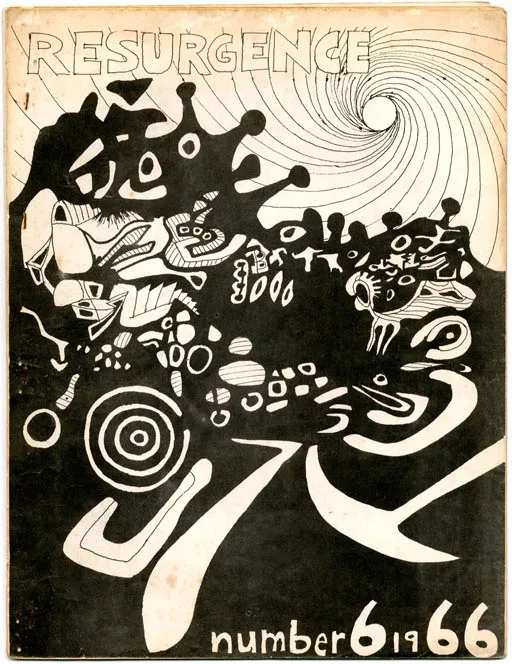
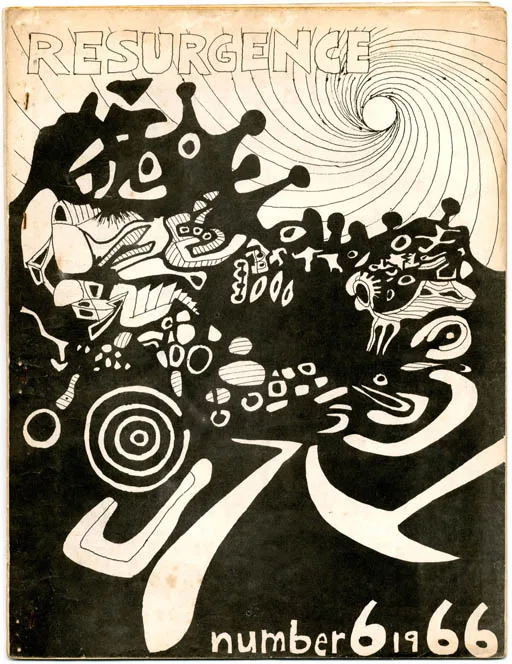
In the ghettos of American cities, a continuous guerilla warfare is waged, generally waged spontaneously, now by groups as well, against the police, and often the National Guard. The full extent of these disturbances is not revealed in American newspapers which rightly fear that spreading of the uprisings. However, the guerillas in the ghettos are not alone in provoking the disintegration of authority and property, Increasing numbers of workers, sometimes within the framework of the organized labor movement, sometimes in wildcat action in defiance of the union, are going on strikes, strikes which are obviously aimed at causing panic, disruption, and an atmosphere of crisis. The full extent of these actions has also been covered up by the capitalist press. On the campuses, students have risen up in defiance of the authoritarian administrations, rioted, taken over school buildings, and started the revolutionary pattern of student struggle that has toppled governments in the Third World, here in the USA.
The most militant single group that has emerged has been the youth. In the ghettos, the gangs and gang federations have many thousands of members, sometimes in affiliation with gangs in other cities. Although no real attempt has been made since the Pachucos to unite all the gangs, the sentiments of this new generation are common, and the solidarity of youth has been so strong as to lead authorities to believe in secret conspiracies. In the past few months, groups described as pro-Chinese Communist and Maoist have been associated with the Struggle in Watts, and in New York, Bill Epton of the PLP has been charged with criminal anarchy. The Spartacist Trotskyists have been charged with provoking the riots in Chicago. On the Left in the USA a guerilla tendency has emerged which has challenged the traditional and old-line Marxists. These groups are stronger than the old-line groups, and are gaining increasing respect in the eyes of the people. Besides those mentioned above, groups such as the American Liberation League, the IWW, and the Students for a Democratic Society are bound to make up a significant part of a National Liberation Front in the United States of America.
Such a group will emerge in the fire of revolution. Joined with the liberation movements in Africa, Asia and South America, the American Revolution will strike the death blow to Imperialism. The Guerilla Revolution will strike down all the values, institutions and defenders of the Imperialist System.
A number of groups exist today which are waging psychedelic guerilla warfare with organized society. These groups, often extremely small, are showing their influence in popular culture, in the increasing interest in the heretic outlooks, surrealism, science fiction, humor, rock n’ roll in a new culture. Newspapers like the East Village Other, groups like Sigma, Grope, the Endists, international networks of anonymous filmmakers like USCO, all rock n' roll, rhythm n’ blues groups and singers. Communal groups like Kerista, the Sexual Freedom Leagues, the Psychedelic Review, and a vast underworld of mystic occult and minority cults. All of these carry the apocalyptic and revolutionary spirit and express their outlook in defiance of the authorities end often reactionary leftists. The Resurgence Youth Movement has drawn together elements from these groups and has urged the organization of United Councils of Struggle to bring together students, dropouts, [and] gang members into an effective force. RYM has met with general hostility from anarchists who are afraid to use their name, and ideologists who resent the use of direct action in a situation where it remains the only possible tactic. RYM aims to articulate and prepare for direct action among millions of young people who will build this revolution.
The government has retaliated with enforcing the use of police against the psychedelic drugs, LSD, pot, the peyote churches, and all of the above mentioned. In the case of LSD, enormous quantities are being produced in underground laboratories, and even in high school and college laboratories. Besides the existing black market, a considerable amount of LSD is being distributed for free by underground chemists. Psychedelic Information Centers in a number of cities openly sell the formulas for making psychedelic drugs through the mail for 25¢.
All of the legal drugs and stimulants that are sold and propagated by the organized society are harmful: tobacco, alcohol, barbiturates, etc. Combined, they probably cause more deaths than anything else in the "civilized" world. Looking at the ingredients of the average dict of the Western World, we can only conclude that the majority of the population is willfully and self-consciously (the information concerning all of this is public, although regarded as controversy) committing suicide. In comparison with the relatively minute number of deaths and damage associated with LSD, and marijuana, one can only conclude that the government suppresses these drugs because they are good.
Many anarchists use both LSD and marijuana and openly declare this. We should issue psychedelic information as part of the anarchist guerilla war of liberation.
The essence of this revolution is its bringing-together of a number of threads of human consciousness and creating, spontaneously, and ever-evolving, a total and free outlook. Thus the psychedelic revolution, the student revolution, the black revolution are all the same revolution. The radical left must recognize the essentially spontaneous and anarchist nature of these revolutions, and abandon the authoritarian principle of politics. They must not repeat the mistake of political "revolutionaries” of South America who renounce the guerillas in the mountains and jungles. The Left must abandon the civil rights movement and advance the black liberation struggle, an armed struggle. The Left must abandon the union bureaucracy and provoke wildcats and walkouts and workers control. The Left must abandon the middle class, and the selfish interests of an increasingly frightened professional class that can never accept the armed revolution of the masses. They must abandon the purist ethic which divides them and separates them from any single phase of the revolution.
Time is running out. The bourgeois newspapers cry in fear, and everywhere the moods change. Something is happening but you don't know what it is, do you Mr. Jones? The music on the radio echoes the sounds of the street riots. Everywhere there is writing on the walls, violent words thrown out at street corners, rumors, hopes and the madness of crowds.
The Resurgence Youth Movement, a World Brotherhood of Revolution advances the new anarchism of body, mind and soul, the psychedelic alchemies of revolution.
Resurgence Youth Movement issues this manifesto to all revolutionaries and freedom fighters in the world guerilla army.
Long Live the World Revolution of Youth!
Let the State Disintegrate!
Liberation or Death!
—May 25th, 1966
Resurgence! Jonathan Leake, Radical Surrealism, and the Resurgence Youth Movement, 1964-1967, edited by Abigail Susik, is now available for pre-order through Eberhardt Press.
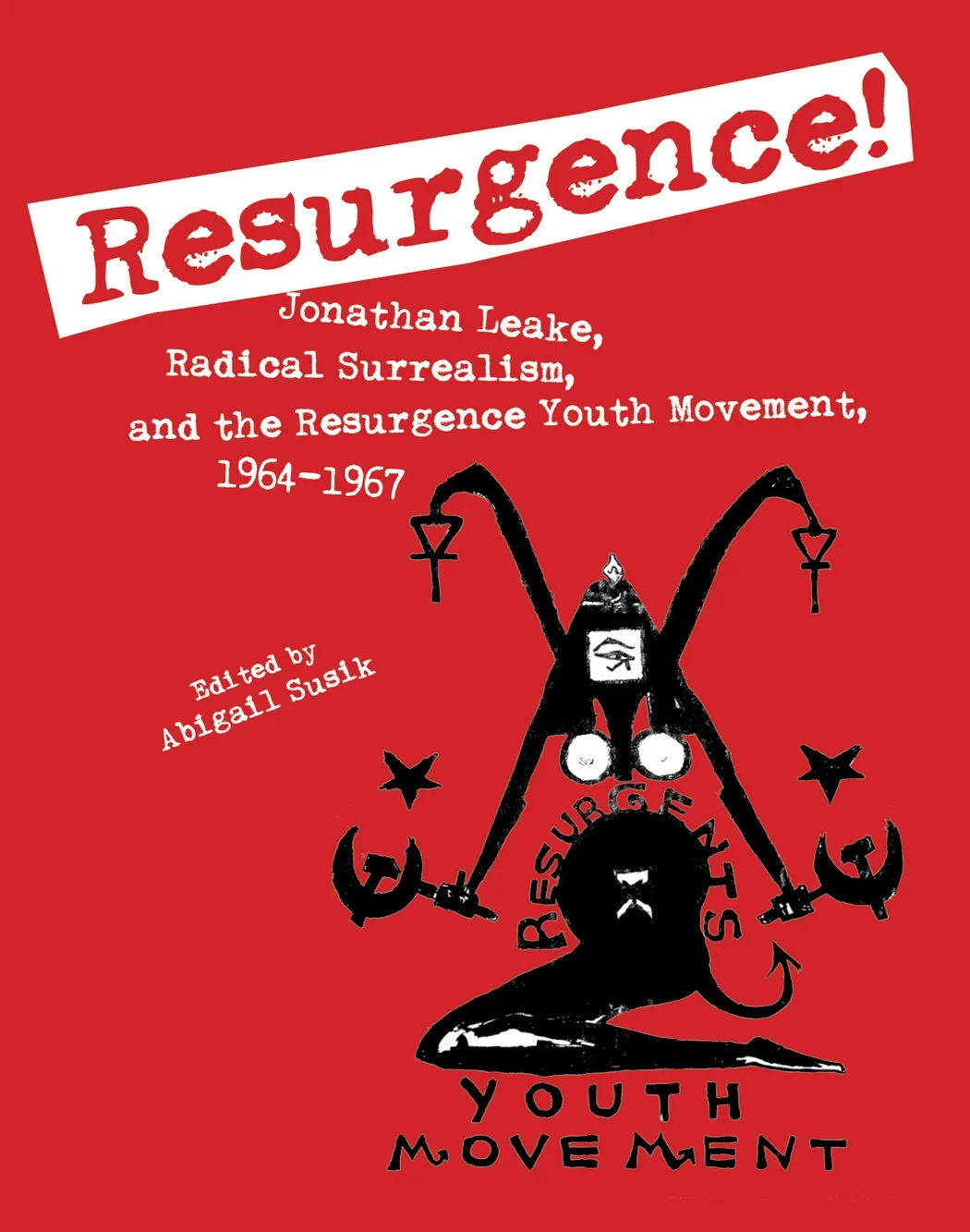
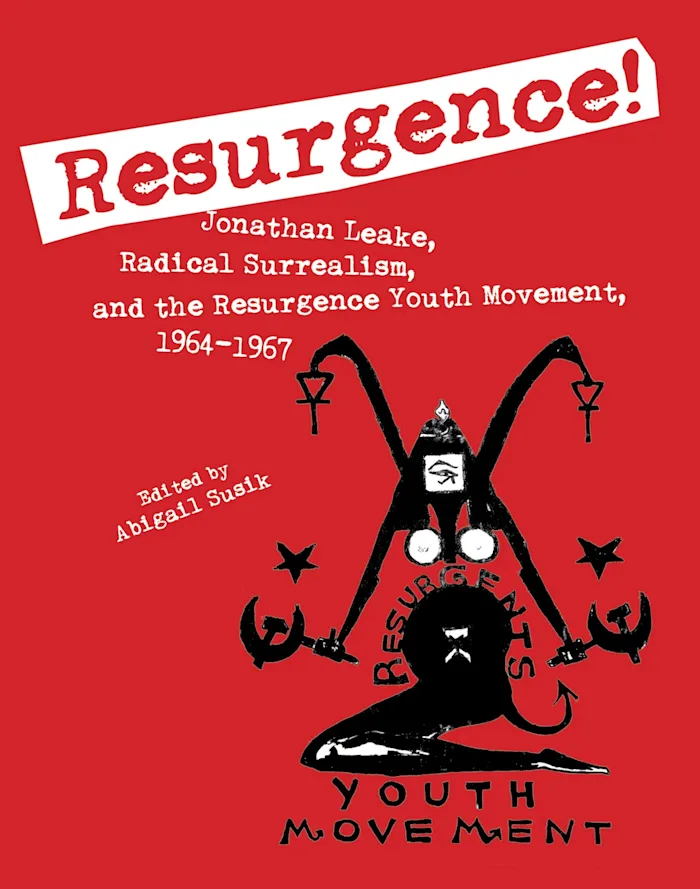
Cover image: Frank Horvat
Notes
1. Fred Thompson and Jon Bekken, The Industrial Workers of the World: Its First One Hundred Years 1905-2005 (Cincinnati: IWW, 2006), 189.↰
2. Resurgence 1 (September-October 1964), 13.↰
3. Andrew Cornell, Unruly Equality: U.S. Anarchism in the Twentieth Century (Oakland: University of California Press, 2016), 282.↰
4. Ibid., 276.↰
5. Resurgence 1 (September-October 1964), 1.↰
6. Pierre Mabille, “Surrealism: A New Outlook,” Resurgence 1 (September-October 1964), 2-3; Pierre Mabille, “Le Surréalisme, un nouveau climat sensible,” Front noir 1 (June 1963): 13-22; and Pierre Mabille, “Le Surréalisme, un nouveau climat sensible,” Courier du Centre International d’études poétiques 15 (June 1957): 27-30.↰
7. Walter Caughey, “Reflections on Invisibility,” Resurgence 1 (September-October 1964), 4-5.↰
8. Resurgence 1 (September-October 1964), 7 (emphasis in the original).↰
9. “Manifesto,” Resurgence 1 (September-October 1964), 13.↰
10. Anonymous, untitled essay, Resurgence 2 (May 1965), 3.↰
11. Untitled essay, 3.↰
12. Untitled essay, 3.↰
13. Leake, “To Be Continued,” 7, 9.↰
14. Jonathan Leake, “History as Hallucination,” Resurgence 3 (1965), n.p. Reprinted in Rosemont and Radcliffe, Dancin’ in the Streets!, 305-6. On this essay by Leake, see Abigail Susik, Surrealist Sabotage and the War on Work (Manchester, UK: Manchester University Press, 2021), 197.↰
15. Jonathan Leake, interview by author, June 21, 2019.↰
16. Leake, Root and Branch, 30-31.↰
17. Untitled essay, Resurgence 11 (1967), 7.↰
18. “World Revolution of Youth,” Resurgence 12 (March 1967), 1.↰
19. Leake, Root and Branch, 76.↰
20. Rosemont, “To Be Revolutionary,” 51.↰